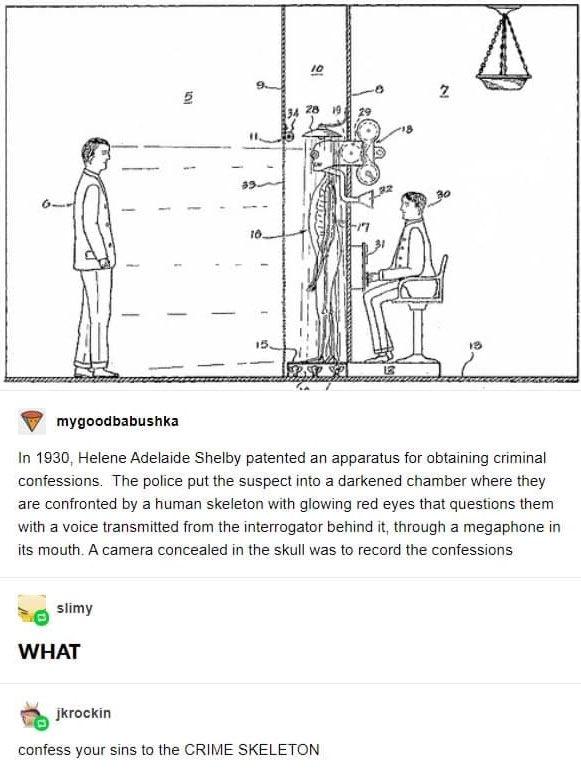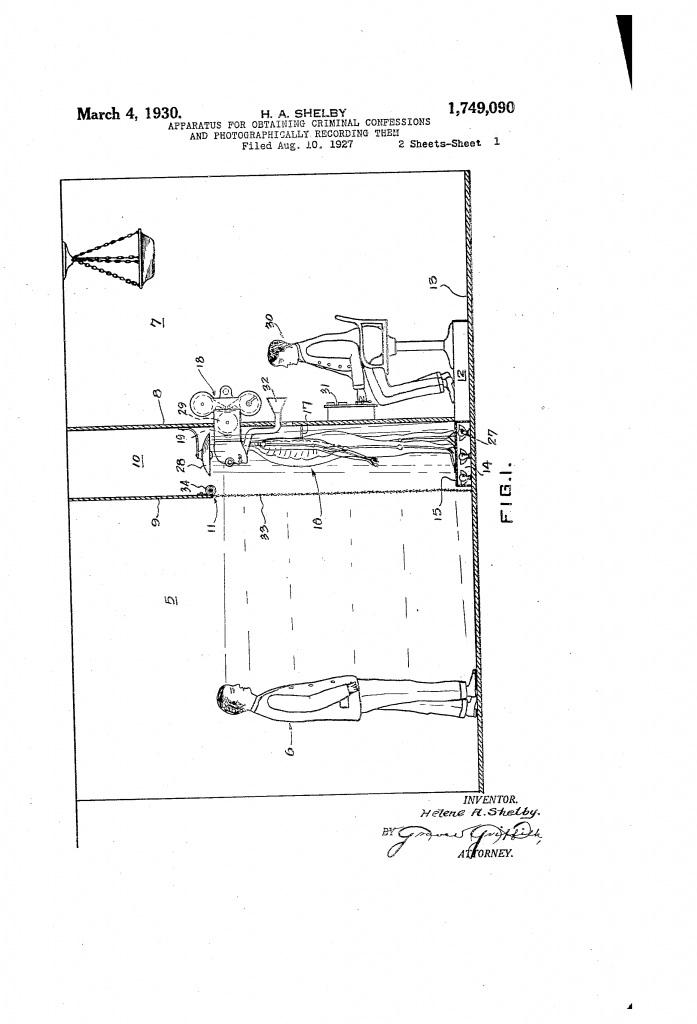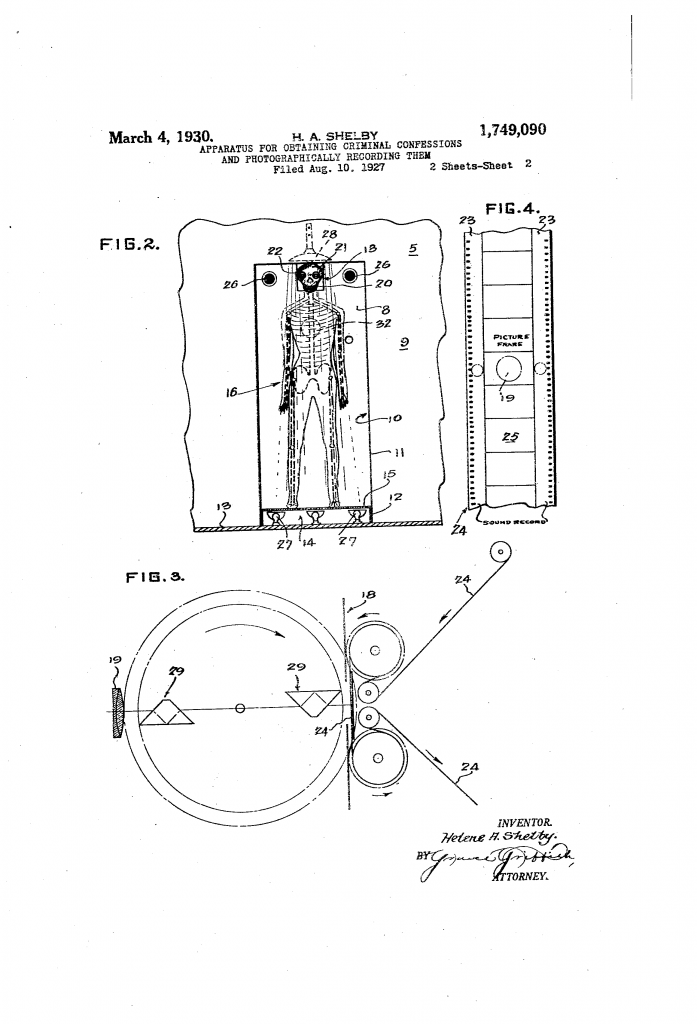After coming across a meme on the internet, I recently spend some time tracking down the patent for what I can only think of as the Crime Skeleton. It is a perfect example that the line between genius and insanity is blurry at best. I’m not quite sure which side of that line Helene Adalaide Shelby’s invention falls under, but I am inclined to go for “genius”. And a somewhat spooky and misguided genius at that.
So let’s take a short break from weird shaving patents and look at a plain weird patent.
As we’ve seen from most of the other patents I’ve showcased, the invention was intended to solve a problem. For once the object wasn’t to get a better shave, but rather to coerce people in police custody to confess to a crime. To quote the patent text:
The present invention relates to a new and useful apparatus for obtaining confessions from culprits, or those suspected of the commission of crimes, and photographically recording these confessions, in the form of sound waves, in conjunction with their pictures, depicting their every expression and emotion, to be preserved for later reproduction as evidence against them.
From US patent 1,749,090
So scare people into confessing,1 film it, and use it in court. Lets see how the crime skeleton worked – or to use the full title of the patent; the “Apparatus for obtaining criminal confessions and photographically recording them.”.

The basic idea of Helene’s invention was to present the suspect with a red eyed, lit up skeleton in a dark room. Pretty spooky stuff, or at least it was meant to be spooky. Let’s examine the patents to see how this spookiness was to be achieved.


The suspect would be led into a dark room, all by himself. The interrogator would be in adjoining room, armed with a handy switchboard and the mouthpiece of a megaphone. As the suspect were standing all alone2 in the dark room, a curtain would be pulled aside. The Crime Skeleton would be revealed in all its glory.
Clad in a diaphanous3 veiling4 and lit from above and below, it would – apparently – produce the appearance of an apparition.5 An apparition with a camera in its skull, and glowing red eyes that dimmed and blinked in response to the sound waves produced by the interrogators voice.
Standing on a glass plate with a plurality of lights underneath, and a lamp above it, the glowing form of the Crime Skeleton would probably be a surprise6 to the suspect. The interrogator would question the subject, and the camera in the skull would record the suspect’s every expression and emotion. It would also simultaneously record the interrogator’s questions and the suspect’s replies.
I cannot get over the mental image of the interrogator ending up shouting “Confess your sins to the Crime Skeleton!” – all while the glowing red eyes of the fake skeleton dims and blinks. Even in 1927, when the patent was granted, it would have sounded more like something out of a comedy than serious police work.
It is worth noting that Helene points out in the patent that:
It is a well known fact in criminal practice that confessions obtained initially from those suspected of crimes through ordinary channels, are almost invariably later retracted, or repudiated, by the criminal with the charge that these confessions had been obtained through intimidation, or under duress.
From US patent 1,749,090
I am wondering why Helene didn’t consider a confession coerced from a suspect by a glowing, red eyed skeleton to not have been obtained by intimidation… when she in the very same patent states the crime skeleton is:
…an apparatus for the creation of illusory effects calculated to impress the subject with their being of a supernatural character and to so work upon his imagination as to enable an inquisitor operating in conjunction with-the recording system to obtain confessions…
From US patent 1,749,090
In other words; a device for coercing a subject to confess through intimidation or under duress.
It would make an excellent prop for a House of Horrors on Halloween though.
The full patent can be read at Google Patents.
Footnotes:
- I cannot be the only one seeing a problem with this approach.
- And probably becoming more suspicious as to what the cops had cooked up.
- Diaphanous; light, delicate, and translucent.
- Veiling; a light gauzy fabric used for veils.
- Apparition; a ghost or ghostlike image of a person.
- And quite possible a source of amusement, once the surprise wore of.

Pingback: Confess to the crime skeleton! - Razors n Blades the shave that saves
Pingback: Crime Skeleton - part II - Wegian WetshavingWegian Wetshaving